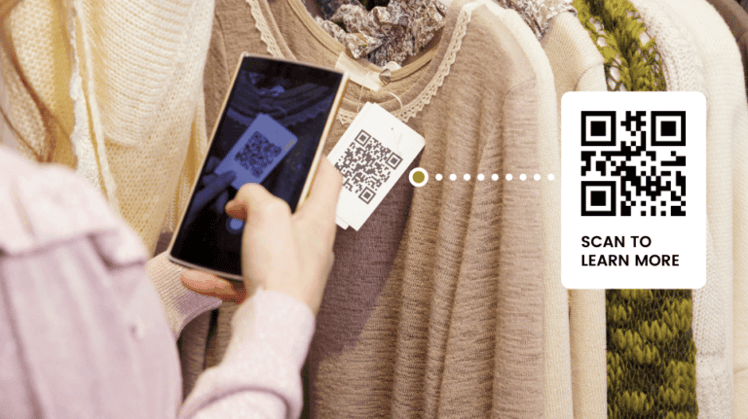USE CODE "YOURAAROMA" and get 10% off
How to Print QR Codes on Clothing Labels: A Definitive Guide
Blog post description.
3 min read


How to Print QR Codes on Clothing Labels: A Definitive Guide
In the age of digital interactivity, QR codes have become a powerful tool for linking the physical world with digital content. For clothing brands, printing QR codes on labels can provide customers with instant access to product information, care instructions, and exclusive promotions. This guide will take you through the process of printing QR codes on clothing labels, from design to application.
Why Use QR Codes on Clothing Labels?
1. Enhanced Customer Engagement: QR codes can link to websites, videos, social media profiles, or exclusive content, providing a richer customer experience.
2. Traceability and Authentication: Ensure product authenticity and track your items throughout the supply chain.
3. Convenience: Customers can quickly access care instructions, return policies, or size guides, enhancing the usability of your products.
4. Marketing and Promotions: Offer special deals, discounts, or loyalty programs through scannable QR codes.
Step-by-Step Guide to Printing QR Codes on Clothing Labels
1. Designing the QR Code
- Choose a QR Code Generator: Use a reliable QR code generator such as QR Code Generator, QR Stuff, or Kaywa. Many of these tools offer customization options for color, logo integration, and design.
- Input the Data: Enter the URL or information you want the QR code to link to. Ensure the URL is short for better scanning efficiency.
- Customize the Design: Adjust colors and add your logo to make the QR code align with your brand identity. Make sure the design maintains high contrast for easy scanning.
- Download the Code: Save the QR code in a high-resolution format, such as PNG or SVG, for optimal print quality.
2. Preparing the Clothing Label Design
- Label Size and Material: Choose the appropriate size and material for your clothing labels. Common materials include satin, cotton, polyester, and woven labels.
- Integrate the QR Code: Incorporate the QR code into your label design. Ensure it's placed in a scannable location with enough white space around it to avoid interference.
- Include Essential Information: Along with the QR code, include necessary details such as brand name, size, care instructions, and any regulatory information.
3. Choosing the Printing Method
There are several methods to print QR codes on clothing labels:
- Heat Transfer Printing: Ideal for transferring detailed designs onto fabrics. Ensure the QR code remains scannable by using high-quality transfer paper and following precise heat and pressure guidelines.
- Screen Printing: Suitable for larger production runs. This method provides durable prints, but ensure the QR code detail is maintained.
- Digital Printing: Offers high precision and is great for small runs or complex designs. Digital printing ensures the QR code retains its integrity.
- Woven Labels: If you prefer woven labels, make sure the QR code design is simplified enough to be woven accurately.
4. Printing the Labels
- Select a Printer: Choose a professional label printing service or invest in a high-quality label printer if you’re doing it in-house.
- Test Prints: Conduct test prints to ensure the QR code is scannable. Use a smartphone or QR code scanner to verify.
- Quality Control: Regularly check the quality and accuracy of the printed QR codes during the production run.
5. Application to Garments
- Sewing: If using woven or fabric labels, sew the labels securely onto the garments in a location that’s easy to find and scan.
- Heat Press: For heat transfer labels, follow the manufacturer’s guidelines for temperature, pressure, and time to ensure the label adheres properly without damaging the fabric.
- Stick-On Labels: For temporary or promotional uses, stick-on labels can be applied, but ensure they are durable enough to withstand washing and wear.
Tips for Success
- High Contrast: Ensure the QR code has high contrast against the label background for easy scanning.
- Testing: Regularly test QR codes during the production process to ensure they link correctly and are easily scannable.
- Durability: Choose durable printing methods and label materials that withstand washing, drying, and regular wear.
- Legal Requirements: Ensure that all mandatory labeling information complies with local and international regulations.
Conclusion
Printing QR codes on clothing labels is a modern, efficient way to engage customers, enhance product information, and streamline your supply chain. By following this definitive guide, you can successfully integrate QR codes into your clothing labels, providing added value and convenience to your customers. Embrace the power of QR codes and elevate your brand’s interactivity and connectivity today!
